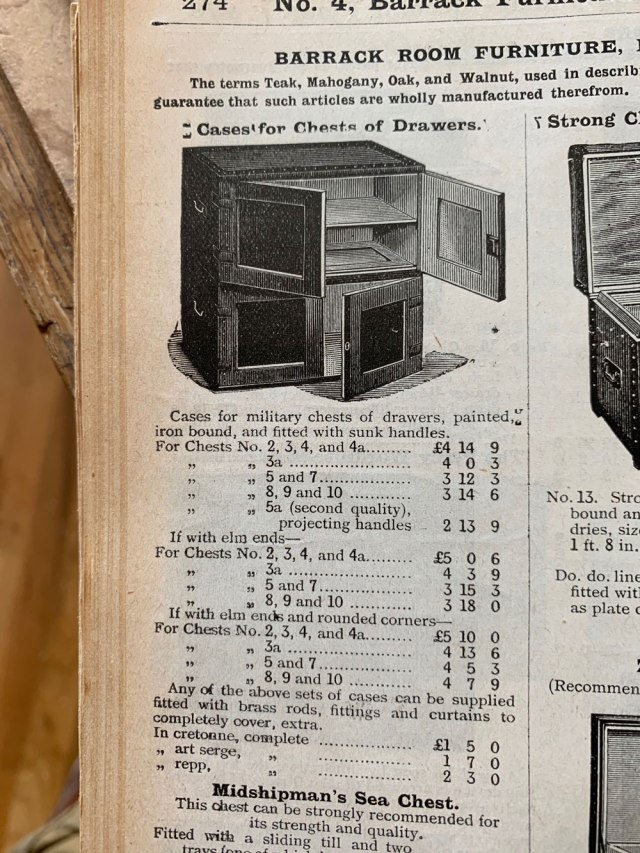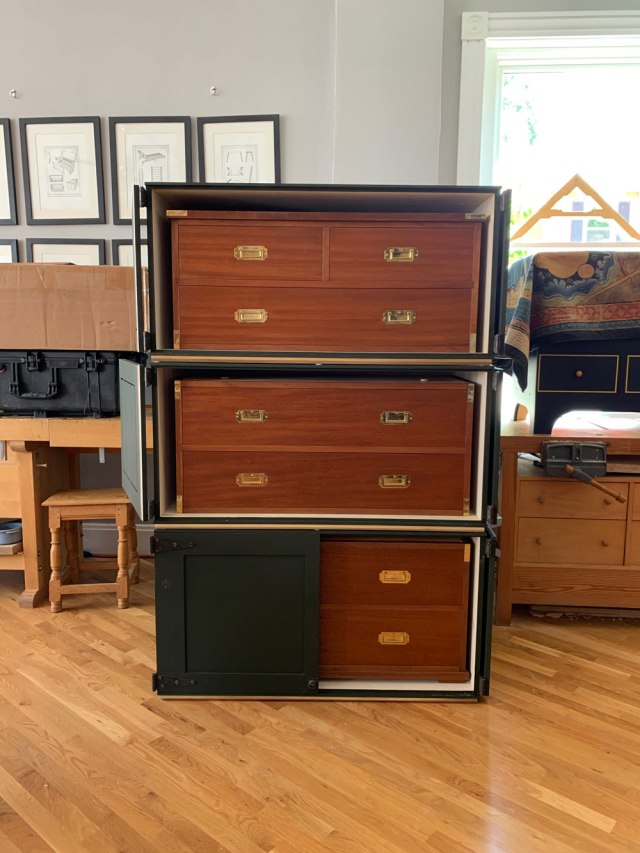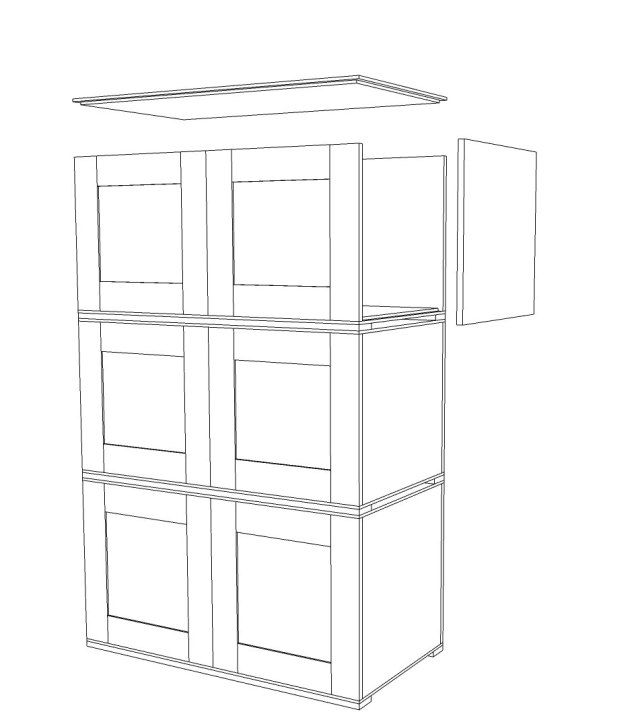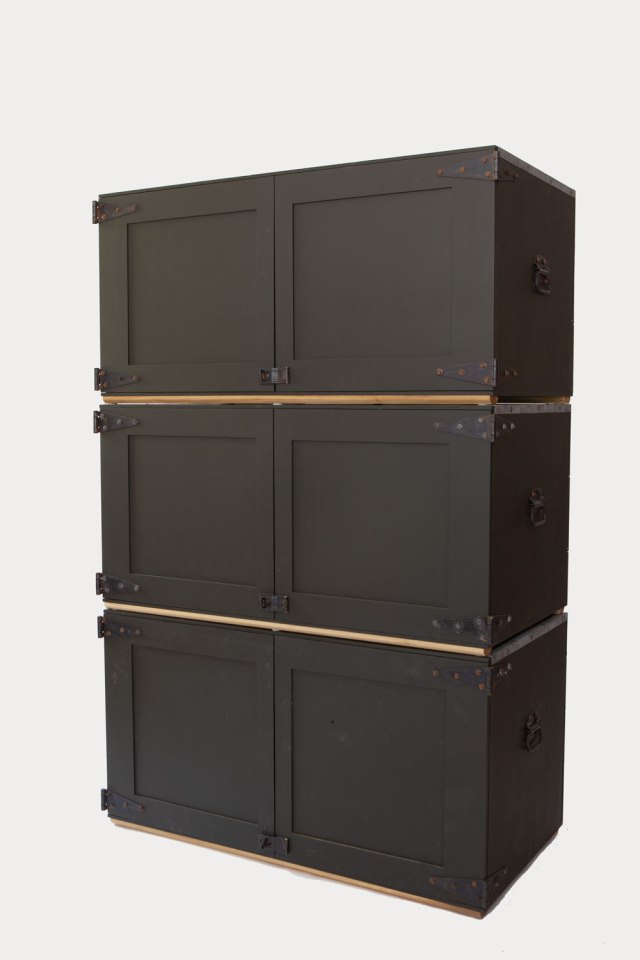
One of the rarer forms of campaign furniture is also one of the simpler and rougher forms.
Because campaign furniture was designed to travel, it often was transported in a specially fitted case, box or canvas bag. So instead of strapping your mahogany chest to an elephant, you would first put the chest into a painted and iron-bound case. And then strap that to your elephant.
When you arrived at your destination, you removed the nice piece of furniture and then used the exterior case as storage. You could fit out the case with a brass hanging rod, curtains or shelves. Other upgrades included using elm for the ends of the cases or rounding the corners, according to the furniture catalogs of the time.

I’ve seen surviving exterior cases for campaign chests only once in the wild. They were in an antique store in Charleston, S.C., and had been refinished and polished.
So when I had a customer ask me to build some transit cases and a campaign chest, I jumped at the chance. In fact, I think I was a little more excited about building the transit cases than the chest itself (I’ve built many campaign chests).

The chests are simple to construct. I used poplar as it is inexpensive and strong enough (and what the customer decided on). The top and bottom boards are rabbeted all around. The ends of the cases are screwed to the top and bottom boards. The rear of the case is filled in with shiplapped backboards that are nailed on. The doors fit inside the rabbets on the front edge. This clever detail prevents the doors from rubbing on their neighboring doors above or below.
The flat-panel doors are assembled with mortise-and-tenon joints. The hardware is steel. As the customer was on a bit of a budget, I used zinc-plated hardware. I stripped the zinc with citric acid and then colored the steel with gun blue. The hardware looks good and saved the customer about $2,000 over blacksmith-made stuff.
We painted the cases a dark green that matched a transit case I own for a Duro chair. And then I nailed on thin steel strapping on all the corners to protect the cases and conceal the screws. The strapping was custom made by my local sheet-metal fabricator (just $20 – yay for the still-industrial Midwest).
Finally, I screwed on poplar cleats for feet that have beveled edges. These cleats allow you to drag the case across the floor easily.
The cases look quite handsome and (I think) were worth the extra effort. The only downside is that one of my other customers saw the cases and asked me to make one for him to fit his Roorkhee chairs and ottomans. So I think I have a lot more of these cases in my future.
— Christopher Schwarz
If you are interested in campaign furniture, I wrote a book about it called “Campaign Furniture.” Also, check out the website for Christopher Clarke Antiques. They are the best sellers and historians of campaign stuff that I’ve met.
